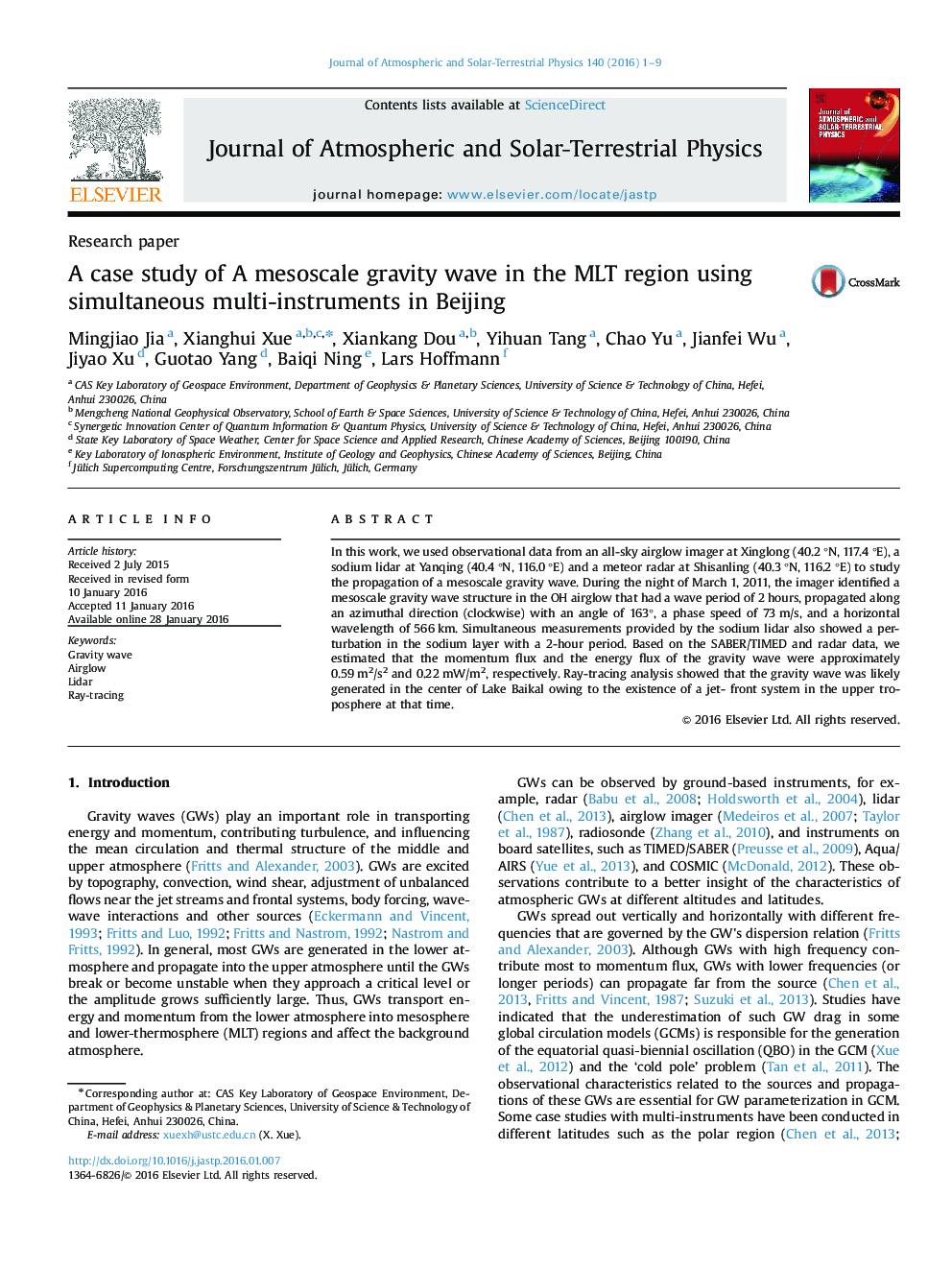| Article ID | Journal | Published Year | Pages | File Type |
|---|---|---|---|---|
| 1776236 | Journal of Atmospheric and Solar-Terrestrial Physics | 2016 | 9 Pages |
Abstract
In this work, we used observational data from an all-sky airglow imager at Xinglong (40.2 °N, 117.4 °E), a sodium lidar at Yanqing (40.4 °N, 116.0 °E) and a meteor radar at Shisanling (40.3 °N, 116.2 °E) to study the propagation of a mesoscale gravity wave. During the night of March 1, 2011, the imager identified a mesoscale gravity wave structure in the OH airglow that had a wave period of 2 hours, propagated along an azimuthal direction (clockwise) with an angle of 163°, a phase speed of 73 m/s, and a horizontal wavelength of 566 km. Simultaneous measurements provided by the sodium lidar also showed a perturbation in the sodium layer with a 2-hour period. Based on the SABER/TIMED and radar data, we estimated that the momentum flux and the energy flux of the gravity wave were approximately 0.59 m2/s2 and 0.22 mW/m2, respectively. Ray-tracing analysis showed that the gravity wave was likely generated in the center of Lake Baikal owing to the existence of a jet- front system in the upper troposphere at that time.
Keywords
Related Topics
Physical Sciences and Engineering
Earth and Planetary Sciences
Geophysics
Authors
Mingjiao Jia, Xianghui Xue, Xiankang Dou, Yihuan Tang, Chao Yu, Jianfei Wu, Jiyao Xu, Guotao Yang, Baiqi Ning, Lars Hoffmann,
